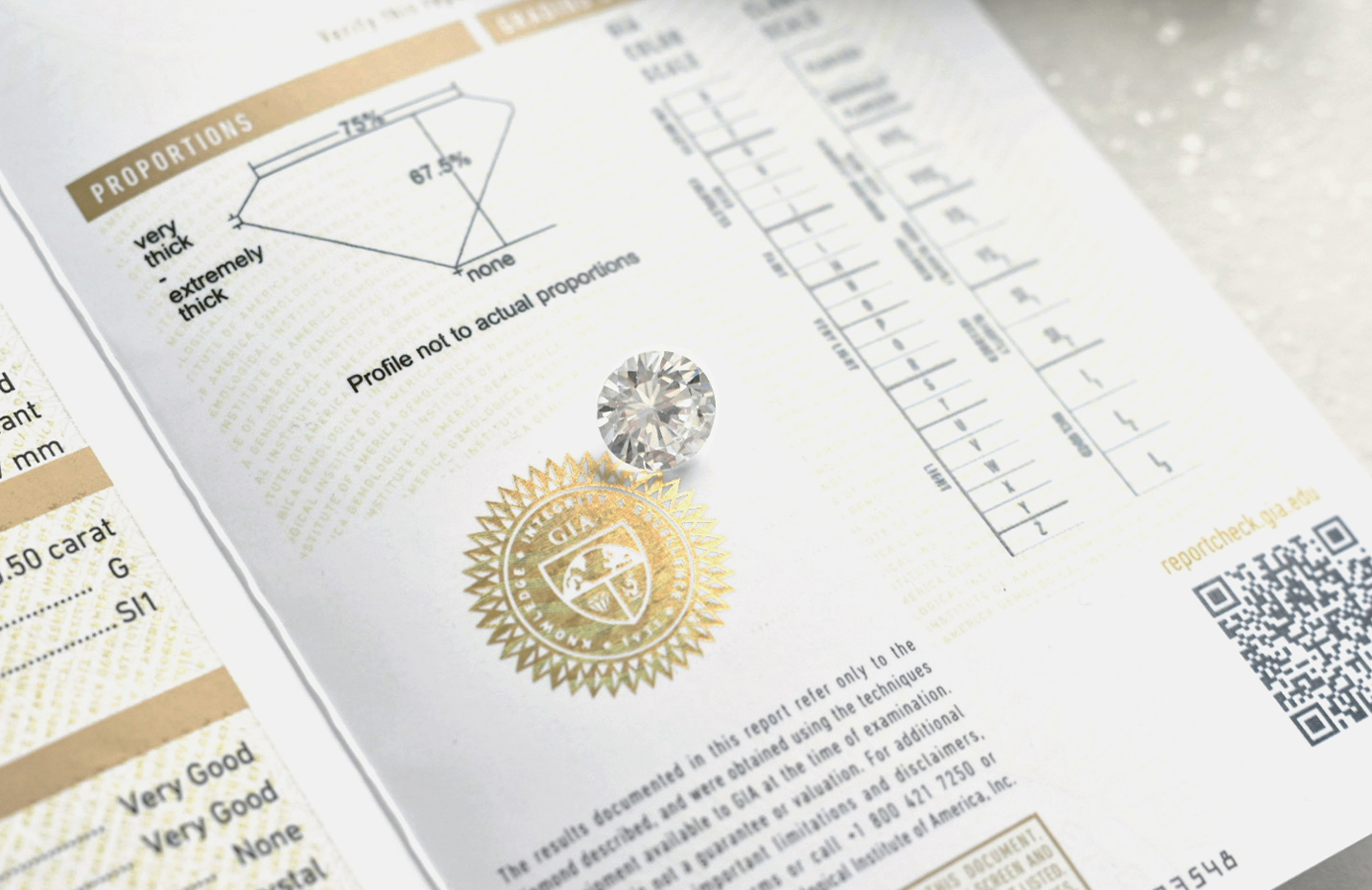

The Gemological Institute of America (GIA) prepares globally recognised assessments of diamonds, so-called certificates.
The Gemological Institute of America (GIA) is the world's most recognised institute for the research and teaching of gemstones and their classification since 1931. Other than their headquarters in Carlsbad, California, GIA has offices in 14 other countries worldwide. Eleven branches are equipped with a campus, seven have a laboratory and four are research centres for gemstones.
One of GIA's greatest successes was setting international diamond standards with the development of the "4C's": Carat, Clarity, Colour and Cut. Today, all diamonds in the world are still classified according to these criteria.
On the 15th of February 1931 the jeweller Robert M. Shipley liquidated all his savings and founded the Gemological Institute of America. At the time, most jewellers had no knowledge of gemstones and traded based on trust and experience. Shipley saw his mission in professionalising the industry through education, research and gemological instruments. In the early days, the young institute offered its services from Shipley's house in Los Angeles.
Since the 1930s, the GIA has achieved numerous breakthroughs in the understanding of gemstones. These include:
1953: The development of a colour scale from D to Z and the classification of purity from F to I3. This system has remained the standard work of diamond grading to this day.
1956: Successful discovery of irradiated yellow diamonds.
1968: First gemological study of the Tanzanite gemstone.
1971: First study of faceted synthetic diamonds.
1999: The first artificially produced diamonds are discovered with the help of investigations. The artificial diamonds are produced using the high-pressure, high-temperature process.
2003: Proof of chemical vapor deposition (CVD) for the production of synthetic diamonds.
The laboratory offers services for diamonds and coloured gemstones. The gemstones are to be recognised and classified in the next step. Diamonds are primarily about the 4C's. The customer can choose between two types of certificates. Either the extensive Diamond Grading Report or the cheaper dossier, which gives less information about the diamond. The prices for creating a report depend on the size of the gemstone. It is important that the market value for the gemstone is not set by the GIA. Diamond graduation reports are required today by most consumers when buying diamonds above a certain size, typically for more than 0.5 carats, almost always for more than 1.0 carat. They are regarded as an important tool to ensure that a diamond has the specified properties.
For increased safety, GIA can also apply a registration number on the gemstone and the certificate, which is not visible to the eye.
For identification reports for coloured gemstones, GIA provides the customer with a commentary on the treatments and, if possible, an opinion of the country of origin for ruby, sapphire, emerald and tourmaline. In the case of pearls, the weight, size, shape, colour, origin and (if possible) treatments will be indicated.
GIA offers various programs and courses online via an interactive e-learning platform and through its 12 campus locations around the world. The Institute offers corporate training programs and works with professional associations worldwide to provide technical training in gemstones and jewellery. The two largest campuses are Carlsbad and New York.
The Graduate Gemologist Program (GG) offers comprehensive training in gemmology. Graduates of the program receive a recognised degree that is highly regarded in the gemstone and jewellery industry. The Graduate Gemologist Program consists of two programs, Graduate Diamonds and Graduate Coloured Stones. Upon successful completion, students are required to know everything about the origin, formation, processing and identification of synthetic stones and the practical application of gemstone grading. If you successfully complete both courses, you will receive the "Graduate Gemologist" title.
Further diploma study courses and courses offered by GIA:
The Richard T. Liddicoat Gemological Library and Information Centre at GIA's headquarters in Carlsbad, California, is the first resource for gemological knowledge. It contains a growing collection of 38,000 books, 700 international journals and periodicals (with ongoing subscriptions to 225 titles), 1000 videos/DVDs, 80000 digital images, and 300 maps. The collection contains works from 1496 to the present, illustrating the history and modern development of gemology. The collection covers the thematic focus of natural and synthetic gemstones, gemstone treatments, jewellery design, production and marketing.
GIA also designs and manufactures professional equipment for grading, identifying and selling diamonds and coloured gemstones. These instruments are used to determine the physical and optical properties of gemstones and to analyse their microscopic properties.
The first GIA instrument, a 10x magnifier, was introduced in the early 1930s. Dark field illumination, an illumination technique that makes gemological inclusions easily visible under the microscope, was patented by Robert M. Shipley Jr. son of the GIA founder and an important person in the field of gemological instruments. In addition to basic jewellery tools such as magnifying glasses, tweezers, and gemological cloths, the GIA product catalogue includes sophisticated instruments ranging from microscopes to spectroscopes.